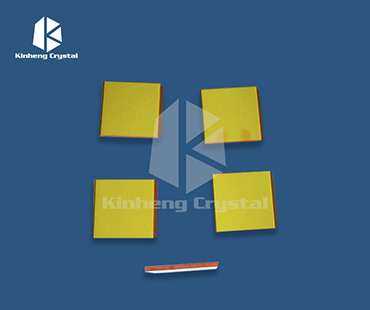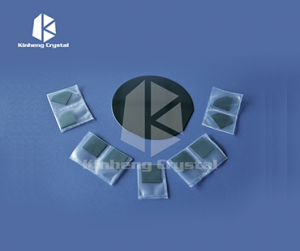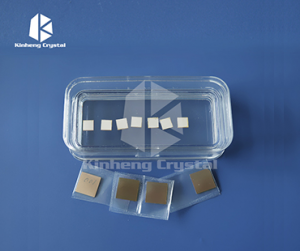BGO substrate
Description
Bi12GeO20 Bismuth germanate crystal is a key material for making narrow band, high stability SAW/BAW domain / time domain device, high sensitive read write holographic memory, digital signal related devices and program control delay.
Typic Dimension: Dia45x45mm and Dia45x50mm
Orientation: (110), (001)
Properties
| Crystal |
Bi12GeO20 (BGO) |
| Symmetry |
Cubic, 23 |
| Melting Point(℃) |
930 |
| Density(g/cm3) |
9.2 |
| Hardness (Mho) |
4.5 |
| Transparencey Range(nm) |
470 – 7500 |
| Transmittance at 633 nm |
67% |
| Refractive Index at 633 nm |
2.55 |
| Dielectric Constant |
40 |
| Electro-optic Coefficient |
r41 = 3.4 x 10-12 m/V |
| Resistivity |
8 x 1011W-cm |
| Loss Tangent |
0.0035 |
BGO Substrate Definition
BGO substrate stands for "bismuth germanate" substrate. BGO is a crystalline material commonly used as a substrate in various scientific and technological applications.
BGO is a scintillation material, which means it has the ability to absorb high-energy radiation, such as gamma rays, and thus emit low-energy photons. This property makes BGO substrates ideal for use in radiation detectors, gamma-ray spectroscopy, and medical imaging devices.
BGO substrates are usually single crystals grown using specialized techniques such as the Czochralski method or the Bridgman-Stockbarger technique. These crystals exhibit high transparency to visible and near-infrared light, as well as excellent light output and energy resolution.
Due to the high atomic number, BGO substrates have high stopping power against gamma rays and thus can be used in radiation shielding and detection applications. They have a wide range of detection energies and are particularly effective at detecting high-energy gamma rays.
BGO substrates can be used as a platform for growing other crystalline layers or depositing thin films of various materials. This allows integrating different functions and creating more complex devices.
In summary, BGO substrates are crystalline materials used in various applications related to gamma-ray detection, spectroscopy, medical imaging, and radiation shielding. They have high transparency, excellent light output, and are ideal for detecting high-energy gamma rays.












